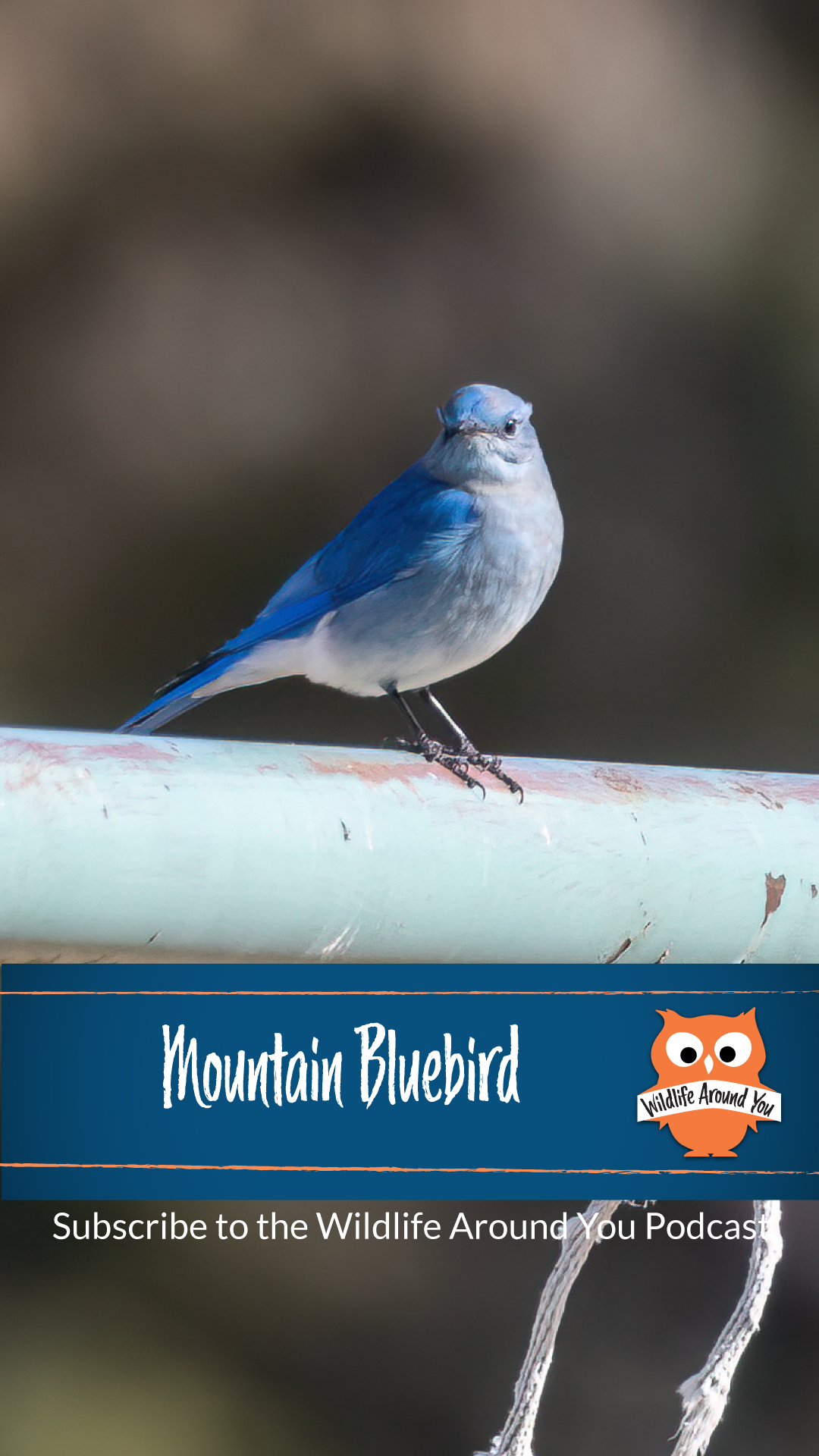Identification
- Mountain bluebirds are medium-sized birds measuring about 7 inches in length with a wingspan of around 14 inches.
- Adult males have vibrant sky-blue plumage on their heads, backs, and wings, with a pale blue chest and belly. They also have a white underbelly and a thin, dark band across the upper breast.
- Adult females and juveniles have more subdued colors, with light blue wings and tails, grayish heads, and pale underparts.
- Both males and females have slender, straight bills and dark eyes.
Habitat
- Mountain bluebirds are primarily found in open areas of western North America, including the western United States and parts of Canada and Mexico.
- They prefer habitats with open grasslands, meadows, and foothills, often near forests or woodlands.
Nesting
- Mountain bluebirds are cavity nesters and can be found in areas with suitable nesting sites, including natural cavities in trees, old woodpecker holes, or man-made nest boxes.
- They use various materials to construct their nests, including fine grasses, pine needles, and sometimes animal hair or feathers for lining.
- The female chooses a mate based on the quality of the nesting cavity and location, instead of his physical traits.
- The female typically does most of the nest-building, while the male assists by bringing nesting materials to the female.
Behavior
- Mountain bluebirds are migratory birds, with some populations moving southward during winter to areas with more favorable conditions.
- They are social birds that often gather in small flocks, especially during migration or in winter roosts.
- Male bluebirds are known for their beautiful song, which consists of melodious warbles and trills. They use their song to defend territories and attract mates.
- Mountain bluebirds are also known for their aerial displays, where they perform swooping flights with fluttering wings to attract females or establish territories.
Offspring
- They typically breed once per year. The breeding season starts in late spring or early summer.
- Females lay a clutch of 4 to 8 light blue or pale blue eggs, usually one egg per day.
- The female incubates the eggs for about 13 to 15 days. During this period, the male provides food for the female.
- Once the eggs hatch, both parents feed and care for the chicks, bringing them a diet of insects and other small invertebrates.
- The fledglings leave the nest after about 20 days but may stay near their parents for a few weeks before becoming fully independent.
Predators
- Mountain bluebirds face several potential predators, including birds of prey such as hawks, owls, and falcons.
- Nest predation is a significant threat, and eggs and nestlings may be targeted by snakes, squirrels, raccoons, and other small mammals.
- However, bluebirds often choose nesting sites strategically to minimize the risk of predation, such as selecting cavities with small entrances or using nest boxes that are harder for predators to access.
Diet
- Mountain bluebirds primarily feed on insects and other small invertebrates. Their diet includes beetles, grasshoppers, crickets, caterpillars, spiders, and occasionally small fruits or berries.
- They are skilled aerial hunters and often catch their prey in mid-flight or from perches. They may also forage on the ground, searching for insects in grassy areas.
Fun Facts
- Mountain bluebirds are known for their strong migratory instincts. Some populations undertake long-distance migrations, traveling as far south as Mexico during the winter months.
- Mountain bluebirds have a unique adaptation to help them digest their insect-rich diet. They possess a muscular stomach known as a gizzard that grinds up hard insect exoskeletons, allowing for better nutrient absorption.
- These birds are monogamous during the breeding season. Mated pairs work together to raise their offspring and defend their territory from intruders.
- Mountain bluebirds exhibit an interesting behavior known as “anting.” They rub ants or other insects on their feathers, possibly to help control parasites or to spread chemical secretions that act as insect repellents.
- Despite their vibrant blue color, mountain bluebirds are not actually blue throughout their entire plumage. Their feathers contain microscopic structures that scatter incoming light, creating the blue appearance we see.
- Conservation efforts, such as providing nest boxes and preserving suitable habitats, have been instrumental in increasing the population of mountain bluebirds, which had faced declines in the past due to habitat loss and competition with other cavity-nesting species.
- Mountain bluebirds are often associated with the arrival of spring in their breeding areas. Their return from migration is seen as a sign of the changing season and is eagerly awaited by birdwatchers and nature enthusiasts.
- The mountain bluebird is the state bird of Idaho and Nevada, representing the natural beauty and diversity of these regions.
- These beautiful birds are highly valued for their aesthetic appeal and are a favorite subject for bird photographers and artists due to their striking blue plumage and graceful flight.

